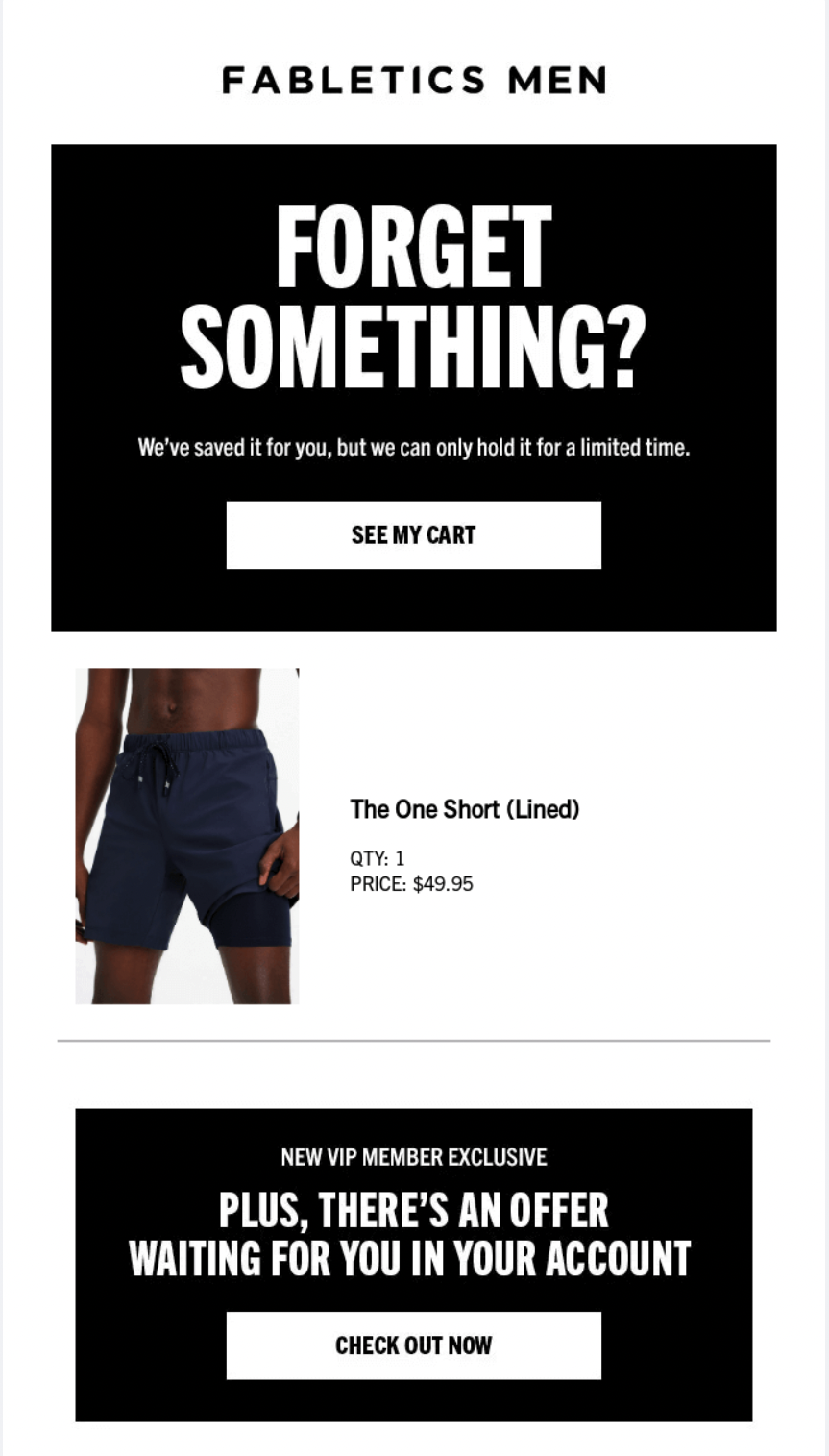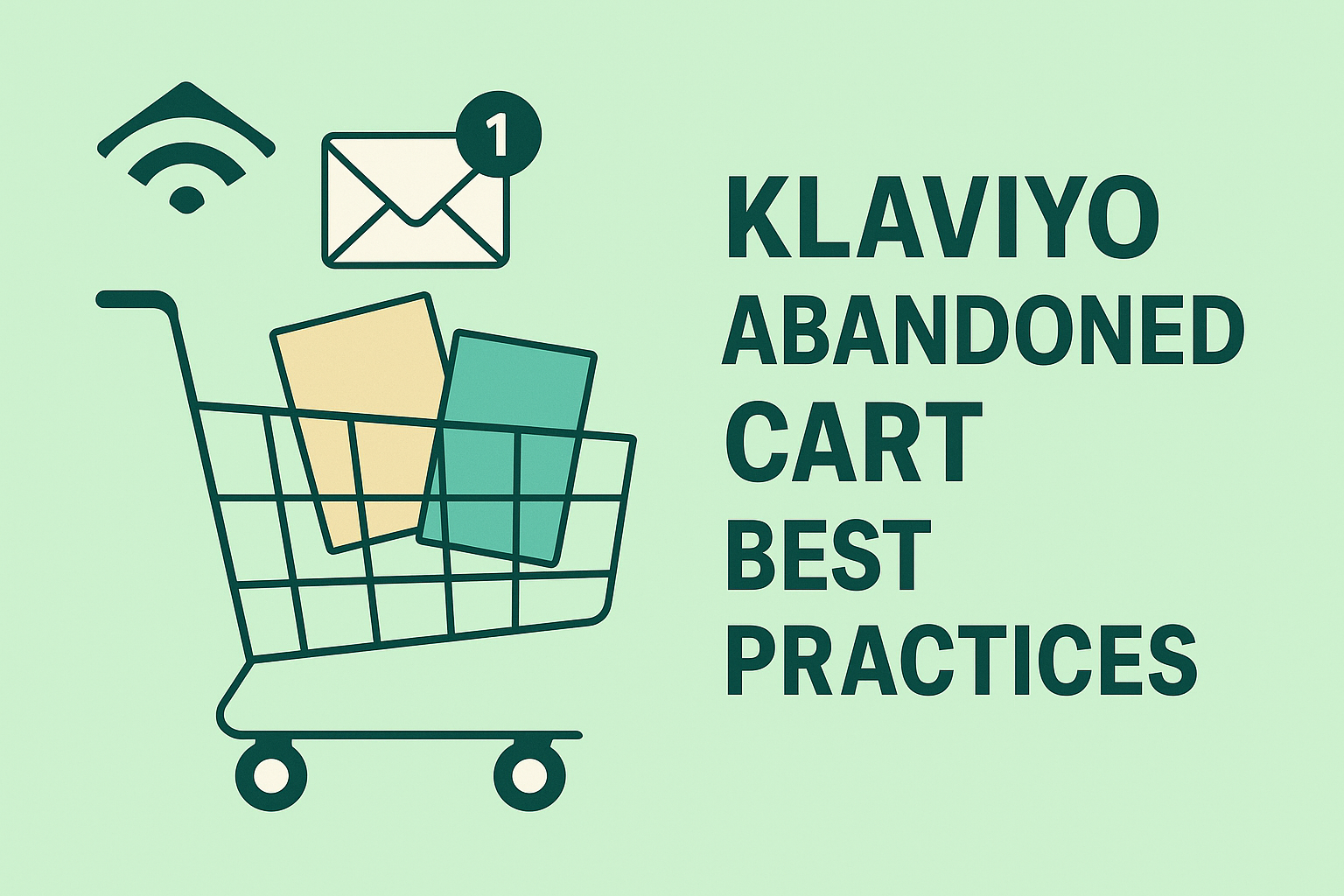Introduction
Abandoned carts are a common frustration for Shopify stores—but with Klaviyo’s marketing automation and Kluvos’s enhanced tracking, they become opportunities to recover lost sales and boost revenue. Leverage these best practices to optimize your abandoned cart flows.
1. Timing is Everything
- First Email: Send within 1–2 hours of abandonment.
- Second Email: 24 hours later.
- Third Email: 3–5 days after, with a strategic incentive.
We recommend keeping your abandoned cart flow short and impactful. A common mistake is dragging the flow on for two or three weeks. By that time, the user has likely lost interest or made a decision elsewhere. Stretching your flow too long can lead to email fatigue and even unsubscribes.
Pro Tip: Build in conditional logic so that if the user returns and purchases, they exit the flow. Klaviyo’s smart filters make it easy to do this automatically and keep your messaging relevant.
2. Personalize Your Content
Personalization is a powerful driver of email performance. With Klaviyo, you can go far beyond just inserting a first name — you can dynamically display cart contents, use conditional logic, and tailor each email to the individual user’s behavior and profile.
Use Dynamic Tags for Names and Details
Address your customers by name using Klaviyo’s personalization syntax. A basic example:
{{ first_name|title|default:'there' }}This tag will display the customer’s first name in title case, or "there" if the name is missing — resulting in greetings like "Hi Sarah" or "Hi there".
Show Cart Items
Klaviyo automatically pulls in cart information if your abandoned cart flow is tied to a checkout event. You can display the exact products the customer left behind using dynamic variables:
{{ event.extra.line_items.0.title }} You can also loop through all cart items using a for loop to dynamically generate a full list of items, including images, titles, and prices.
Use Conditional Logic for Smarter Personalization
You can use conditional tags to display content only when certain conditions are met. For example, you might want to show a VIP offer only to returning customers:
{% if person|lookup:'is_vip' %}Thanks for being a VIP!{% endif %}Explore More Tags
Klaviyo provides a robust set of personalization variables for events, profile data, custom properties, and more. You can find a full list of available tags and examples in their official documentation: View Klaviyo’s Dynamic Tags Reference.
The more personalized your emails, the more likely a customer is to return and complete their purchase. Don’t underestimate the impact of a message that feels tailored just for them.
3. Craft Compelling Subject Lines
Your subject line is the gateway to your abandoned cart email. If it doesn’t catch attention in the inbox, the rest of your message may never be seen. Use clear, benefit-driven language that sparks curiosity, creates urgency, or connects emotionally.That said, avoid manufacturing urgency where none exists. Trust is critical — and misleading subject lines can feel disingenuous or manipulative. Always aim to build long-term customer relationships, not just quick clicks.
Examples That May Work
- “Did you forget something?”
- “Your cart misses you!”
- “Hurry, items may sell out!”
- “Still thinking it over? Don’t wait too long…”
- “Your items are almost gone – complete your order”
A/B Test for Higher Open Rates
Don’t assume you’ve found the perfect subject line — test it. Klaviyo allows you to run A/B tests (also known as split tests) directly in your flow. Try testing different tones (funny vs. urgent), personalization (“{{ first_name }}, your cart’s waiting!”), or even emojis to see what resonates best with your audience.
A few tips for running a good subject line test:
- Test one variable at a time – e.g., the wording, not the send time and wording together.
- Run the test long enough to get statistically significant results.
- Look at both open rate and click rate to measure success holistically.
Over time, subject line testing can improve not just your open rates — but your entire abandoned cart revenue.
4. Incorporate Strong Visuals

Example: Fabletics uses strong visuals and minimal text to re-engage shoppers. View full email.
Visual reminders boost emotional connection and drive clicks. Including product images, lifestyle photos, or branded graphics helps create an immediate emotional tie between the shopper and their cart. Keep visuals clean, on-brand, and mobile-friendly for best results.
Need some inspiration? Be sure to check out: https://reallygoodemails.com.
5. Highlight Social Proof
Integrating product reviews, ratings, or testimonials into your abandoned cart emails can significantly boost credibility and reduce purchase hesitation. Social proof reassures potential customers by highlighting positive experiences from others, making them more likely to complete their purchase.
6. Provide a Seamless Return Path
Even the best abandoned cart emails won't drive results if customers don't know what to do next. Every email should include a clear, bold call-to-action (CTA) button that links directly back to the customer's cart — no extra steps, no confusion.
In the earlier Fabletics example we shared, notice how prominently the CTA buttons are displayed. They stand out visually, use action-driven language like "Complete Your Order," and make it effortless for the customer to pick up where they left off.
Best Practices for Your CTA Button:
- Make it highly visible — use contrasting colors and ample white space.
- Use action-focused language — examples: "Return to Your Cart," "Complete Your Purchase," "Grab It Now.", "Check Out Now."
- Link directly to the active cart — not your homepage or a collection page.
- Include multiple CTAs if needed — one near the top and one near the bottom to capture both early and late readers.
A seamless return path reduces friction and makes it as easy as possible for the customer to finish checking out — boosting your cart recovery rates dramatically.
7. Incentivize Strategically
Reserve discounts or free shipping for your final email to nudge final conversions without training customers to expect a discount every time.
8. Ensure Mobile Optimization
Use responsive templates and test across devices to guarantee a flawless mobile experience.
9. Integrate Omnichannel Touchpoints
Complement emails with SMS reminders (1–2 hours after abandonment) that include direct cart links. Ensure opt-in compliance for SMS.
10. Leverage Kluvos for Enhanced Tracking
Klaviyo’s built-in tracking works well — but only when a user is known and cookies persist. That’s where Kluvos takes your abandoned cart flows to the next level.
Kluvos sends server-side events (such as Add to Cart, Viewed Product, and Active on Site) directly to Klaviyo, bypassing the limitations of browser-side tracking. This enables:
- More accurate cart triggers – even when cookies are blocked, expired, or the user is browsing incognito
- Smarter segmentation with flow filters – Kluvos enriches Klaviyo with server-verified data so your abandoned cart flows can target high-intent users with confidence
- Reduced overlap and duplication – with smart logic to distinguish between native and Kluvos-triggered flows, minimizing the risk of sending multiple emails to the same person
Reach More People with Probabilistic Matching
Kluvos includes an AI-powered identification layer that uses probabilistic data modeling to recognize users who Klaviyo would otherwise miss. Even if the user is browsing anonymously or hasn’t opened a tracked email recently, Kluvos can often match them to an existing email profile in your Klaviyo database.
This means:
- You can send more abandoned cart emails – recovering more sales from sessions Klaviyo didn’t detect
- Flows reach higher-value segments – with more complete visibility into browsing behavior and cart activity
- You gain confidence in your data – fewer gaps, stronger attribution, and more reliable flows
Bottom line: if you're serious about maximizing email revenue from abandoned carts, you need better visibility. Kluvos fills in the gaps so you can message more users, more confidently — and recover more revenue.
Continuous Testing & Optimization
Regularly A/B test timing, subject lines, content, and incentives using Klaviyo’s built-in tools to refine your strategy based on real data.
Conclusion
Implement these Shopify-specific Klaviyo abandoned cart best practices and leverage Kluvos’s enhanced tracking to recover more revenue. Start today and watch your abandoned cart recovery rates climb!
